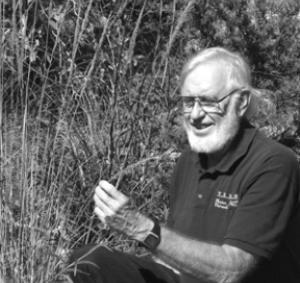Climate Change Explained
Dear Readers, I am sure that among those who read my columns there are folks who are seriously concerned with the condition of our planet and want to do what they can to solve it, others who either don’t believe in Global Warming or consider it something modern technology can find a cure for, and lots of folks in between.
David Attenborough’s book, “A Life on Our Planet,” discusses about every aspect of this topic, what the problem is, how it happens, what causes it and what we can do about it. And I hope to summarize much of what Attenborough has written, in this and subsequent columns.
Today, I hope to summarize the basics about “Climate Change” or if you prefer “Global Warming,” making liberal use of Attenborough’s words.
He starts by saying, “The living world is essentially solarpowered” and The Earth’s plants, algae, and phytoplankton capture three trillion kilowatt hours of energy every day! That is 20 times the energy we (humans) use”
He is talking about the chemistry of photosynthesis in which carbon dioxide and water, with the help of sunshine and the catalyst chlorophyll in green plants, is converted into carbohydrates (starches, sugars, cellulose—in other words plant tissue.) Oxygen is a byproduct of that reaction. (And by the way, until enough of that reaction had taken place on the emerging Earth, there was not enough oxygen to support animal life.)
A few hundred million years ago, as plants became large and abundant, especially in swampy areas, as the plants died and sunk to the bottom of the swamp and became covered with many layers of sediment, they eventually became coal. Also, in salty or stagnant lakes where even higher concentrations of algae and phytoplankton grew and died and were covered with layers and layers of sediment, after millions of years, oil and natural gas (methane) were formed.
The first oil was discovered in the US in 1859, by Col. Edwin Drake in Pennsylvania. It was 29 feet deep.
It is important for everyone to understand, that when we “burn” petroleum in any form, or even wood, the process of combustion is essentially the reverse of photosynthesis—burning releases the carbon in the fuel back into the atmosphere.
We have only been using oil on a large scale for less than 200 years, and coal a bit longer than that. Attenborough states the obvious, “In the process we have returned millions of years-worth of carbon back into the atmosphere in a matter of decades.” And that, or course, is what is causing the Earth’s temperature to rise.
Most people think of global warming not in terms of the changes in the Earth’s annual world-wide temperature, but which causes changes most directly affect our lives, like increased wildfires, more severe droughts, raising sea levels.
Another effect of more carbon in the atmosphere, is a greater amount of carbon dioxide in the air over the oceans, which means more carbon dioxide dissolving in the oceans which leads to more acidity of the ocean which can destroy corals.
Attenborough writes, “We have less than a decade to switch (to renewable energy). We have already increased global temperature by 1 deg. C. If we are to halt its increase at 1.5 deg (a goal scientists say we should never exceed), there is a limit to the amount of carbon our generation can yet add. We are the first generation to truly understand the problem—and the last with a chance to do anything about it.”
So, burning fossil fuels releases carbon to the atmosphere that was locked away in deep deposits for millions of years. The whole point of renewable energy (wind, solar, tides, heat deep within the earth) is just that, it is renewable, and it doesn’t release carbon. We don’t use it up. When our ancestors burned logs to cook and keep warm, the carbon that was released was recaptured by the photosynthesis of already existing trees, because mankind had not yet destroyed so much of the native vegetation. But by now we have done just that.
But once humans had cleared a certain amount of the rainforests and other vegetation for farms, there was less green vegetation left to carry out enough photosynthesis to capture the carbon dioxide in the air and prevent it from accumulating to dangerous levels—that is, the energy our ancestors were using was becoming no longer renewable. And worse, we humans had learned how to harvest millions-of-years-old carbon in petroleum, which is obviously, by definition, not renewable and thus unsustainable.
Fortunately, we are slowly developing more and more practical renewable energy sources. Unfortunately, the pace of conversion may be too slow.
Until next time…
Jim Stanley is a Texas Master Naturalist and the author of the books “Hill Country Ecology,” “Hill Country Landowner’s Guide” and “A Beginner’s Handbook for Rural Texas Landowners.” He can be reached at jstmn@ ktc.com. Previous columns can be seen at www.hillcountrynaturalist.org .

